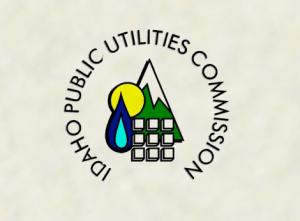Rate Case Roundup: Idaho

Both electric and natural gas rates were in play in a rate application filed with the Idaho Public Utilities Commission by Avista Corporation d/b/a Avista Utilities. However, as a result of a settlement agreement, the company’s rates will rise by substantially less than what had been requested.
For its electric operations, Avista had asked for an increase of $18.6 million for 2018 and another $9.9 million for 2019. The company proposed a two-year rate plan for its natural gas service as well, seeking $3.5 million in additional revenue in 2018 and a further $2.1 million in 2019. Under the stipulation, however, the utility may raise its electric rates by only $12.9 million in 2018 and by $4.5 million in 2019. Proportionate adjustments were made to the company’s natural gas revenues as well, which will climb by $1.2 million in 2018 and by a similar $1.1 million in 2019.
In seeking rate relief, Avista informed the commission that a key factor in its need for greater revenue related to ongoing capital improvement and replacement projects. Like many utilities, the company said its existing system was aging and deteriorating, making facility upgrade programs imperative. For its electric operations, the company also reported that its power supply costs were increasing even while demand was falling in two of its customer classes.
As to its capital programs, Avista said it was actively engaged in rehabilitation work at a biomass plant and had participated in the installation of state-of-the-art emission control equipment at the Montana-based coal-fired Colstrip generating station. Avista is a partial owner of the Colstrip facility and while several environmental advocacy groups protested the utility’s continued reliance on the Colstrip plant, the settling parties deemed the station to still be of value to the company’s overall resource portfolio, especially upon completion of the so-called “SmartBurn” emissions reduction project.
The commission agreed with the company’s assessment that the Smart- Burn initiative represented a relatively low-cost but high-yield investment. That is, the commission said, the technology used in the SmartBurn project cost much less than other emission control equipment yet is likely to minimize the size and cost of other future emission control projects.
The commission added that it viewed the SmartBurn investment as a “cost-effective way to incrementally reduce nitrous oxide emissions” at the plant. The commission found that the air quality attributes of the work would benefit citizens in many parts of the Northwest, not just those living in Montana.
Besides the settlement’s treatment of the costs of the utility’s SmartBurn project, the commission drew special attention to one other provision in the rate agreement, that being a new ROE for the company. The commission upheld the 9.5% ROE set forth therein, deeming it reasonable and appropriate in light of current economic conditions both in Idaho and around the country. The commission commented that the 9.5% ROE is lower than the 9.9% ROE that had been sought by the company. Re Avista Corp. dba Avista Utilities, Case Nos. AVU-E- 17-01, AVU-G-17-01, Order No. 33953, Dec. 23, 2017 (Idaho P.U.C.).



